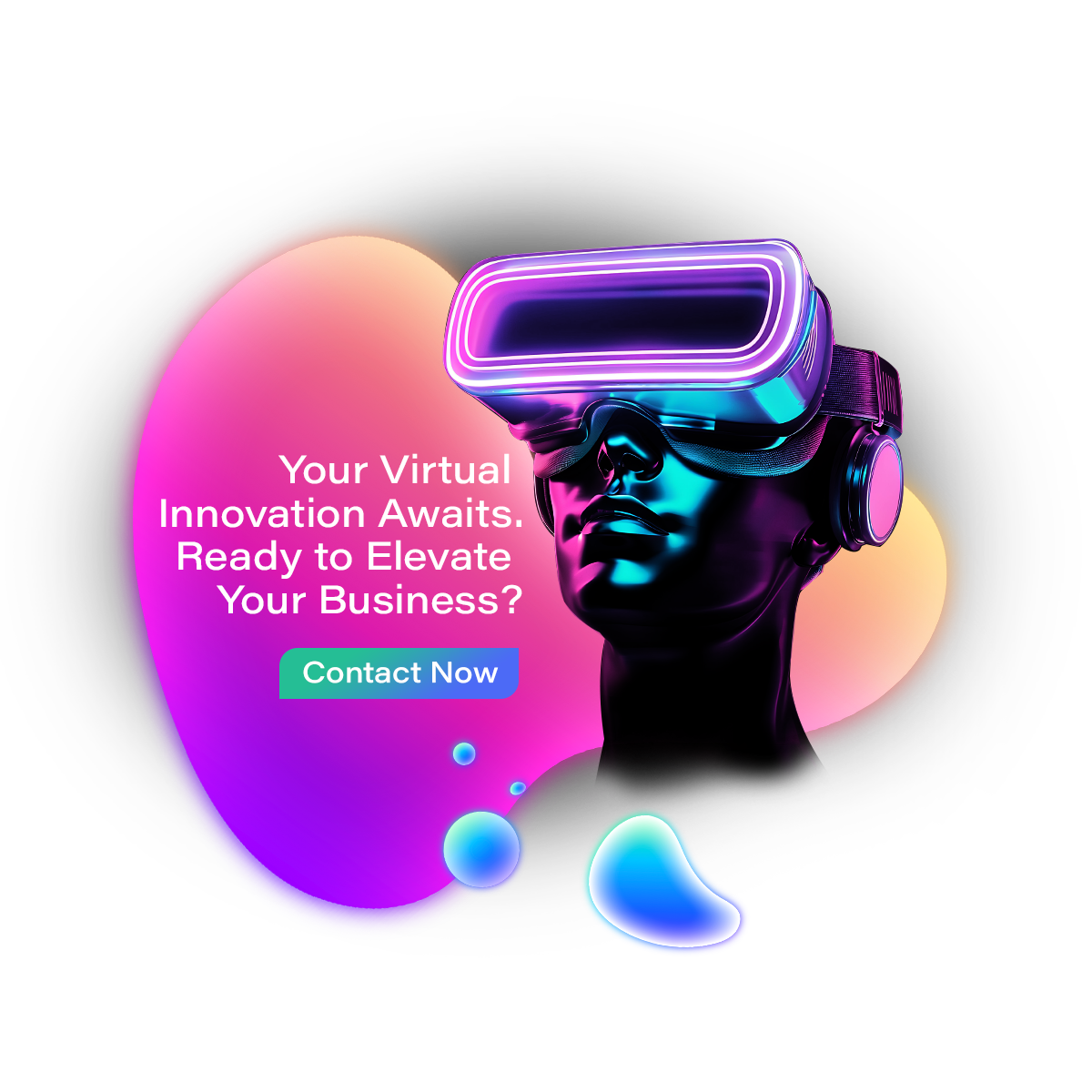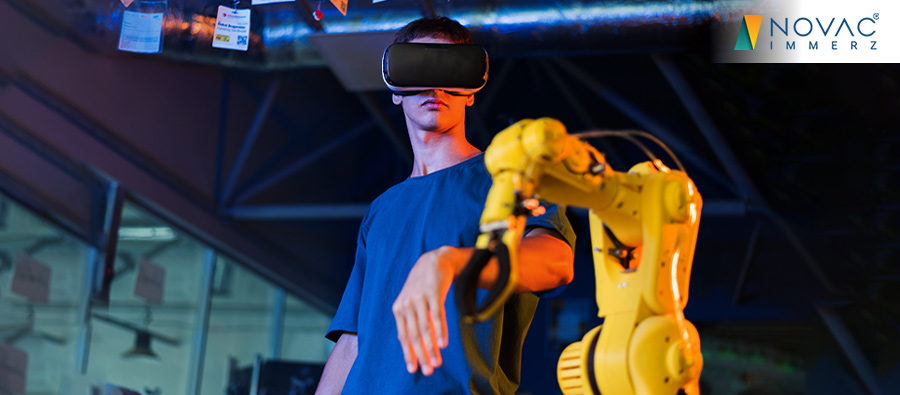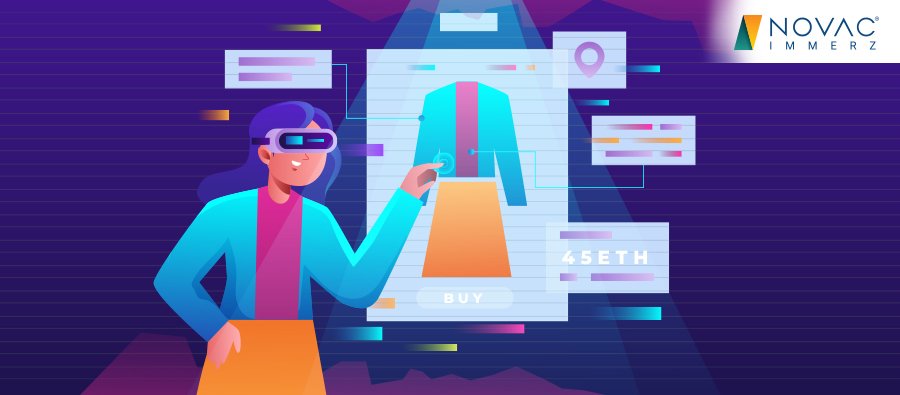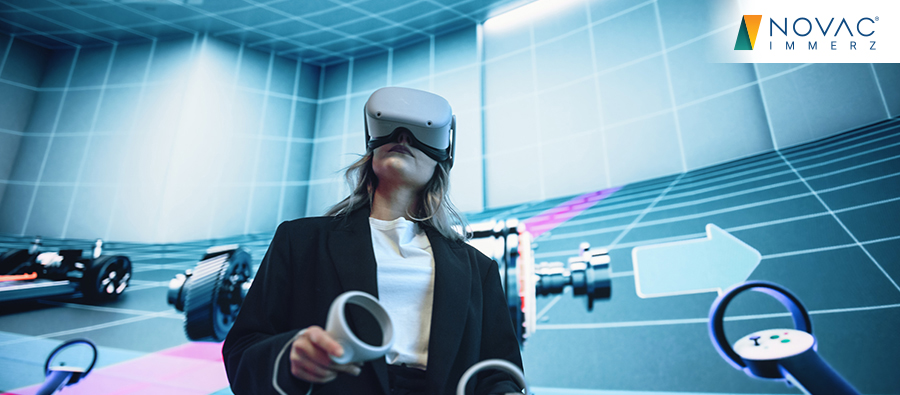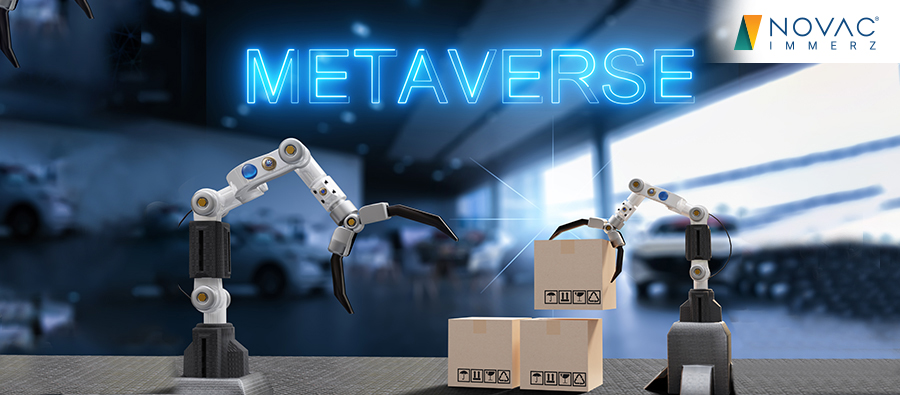Overview
In today’s hyper-connected world, selling a product or service is no longer about what you offer; instead, brands must focus on providing a unique customer experience to buyers as they learn about the brand’s omnipresence and features across several channels. Customers expect a step above convenience. They seek engaging, intuitive, and tailored experiences. With decreasing loyalty and fast-dissolving barriers to switching to desired products and services, a superior customer experience is now a metric to be achieved by companies. This metric, along with price and quality, is now a strategic priority for most businesses.
Companies are now looking for out-of-the-box solutions to provide the best immersive experiences by harnessing the power of AR and VR. Whether it’s trying on a pair of shoes virtually, exploring a car model, or viewing properties in any desired location, AR/VR solutions are reshaping how brands inform, persuade, and convert their audiences throughout their shopping journey, ultimately increasing sales.
This blog delves into how AR and VR are transforming customer experience and driving sales.
- Customer Experience
Complex and Highly Varied Products
Some businesses can find it hard to showcase complicated or large-scale items like vehicles, unique high-end products, or items with several configurations, which can pose confusion amongst customers as they expect a deeper understanding of the product, as they intend to purchase.
Engagement and Interactivity
Some customers enter a physical store to build a relationship with the brand and trust it with the products they wish to purchase. Companies must design engaging experiences that enable customers to delve into products and see customizations so that they can make sound purchasing decisions. A company's offline and online presence must operate effortlessly and seamlessly to compete and maintain customer loyalty.
Inconsistent Experience Across Channels
Today, customers seamlessly transition between digital and physical channels. If the brand experience across channels is not consistent or logical, it results in friction. Channel inconsistency can lead to missed opportunities to connect, eroded trust, and ultimately a bad customer experience.
- Sales Outcomes
Higher Product Return Rates
Imagine a situation where a product fails to meet a customer’s expectations due to misleading imagery. This will erode trust and brand reputation, convey a misleading image, resulting in increased product return rates, higher operational costs, and low customer loyalty.
Drop-offs In the Purchase Process
Most companies are seeing elevated drop-off rates halfway through product discovery or at checkout. This may be due to confusion, too much product information, or a fragmented process that does not properly lead the customer to conversion.
Misaligned Product Expectations
If the sales process fails to provide customers with sufficient clarity through visuals, demos, or real-world context, it can result in misaligned expectations. This disconnect tends to end in failed conversions or post-purchase letdown, which could harm revenue and brand equity
Why Is AR/VR a Game-Changer in Customer Experience?
Customer experience is no longer confined to the boundaries of websites, storefronts, or service centers. It now extends to the immersiveness, personalization, and intuitiveness of each touchpoint in the customer journey. AR/VR solutions not only inform customers but also involve them in the process, i.e., the story behind the product.
- Immersive Storytelling for Emotional Connection
AR VR experiences let customers step into the brand’s story through a virtual tour to a scenic destination or an AR filter that lets buyers try out products in their space, like furniture or watches. This signifies the product's more substantial and memorable emotional impact.
- Real-time Interaction and Personalization
AR VR for customer experience allows users to control how they engage with a product or service. They can zoom in, change colors, configure features, or interact with virtual assistants to update their knowledge in real time. By doing so, the experience becomes personal, interactive, and more persuasive than a demo video or brochure.
- Higher Engagement, Better Recall
Users who are actively engaged in an experience will remember the product for a long time. Research has indicated that experiences that engage users deeply ensure enhanced product recall and enhanced product association, which ultimately lead to more educated buying decisions.
How AR and VR are transforming the customer experience and sales across industries?
Immersive technologies are already being adopted at work across industries, delivering tangible results from increased conversion rates to reduced product returns. Let’s look at how brands use AR VR to improve customer experience and cement their position in the global market.
- Retail and eCommerce
The retail industry leverages AR/VR technology significantly, as online shopping has made it uncertain for customers to choose the right product. AR/VR solutions eliminate the guesswork and improve customer experience with AR.
Virtual fitting rooms allow consumers to wear clothes, glasses, or any other accessories from home. The clothing company Gap has developed an Augmented Reality application, DressingRoom. The AR application offers customers an opportunity to test out clothes in a virtual room, improving the user experience as it eliminates the time and effort spent walking into a physical store.
An example is IKEA's AI app, where customers can view how furniture appears in their surroundings with AR overlays and 3D product configurators to tailor the furniture's color or size in live viewing.
- Automotive and Manufacturing
Purchasing a car is a big expense for many customers, and augmented reality solutions assist customers in envisioning their choice before driving to a dealership personally.
Luxury brands such as Audi and BMW have incorporated virtual showroom experiences into their showrooms. These experiences enable customers to view the car’s interior and exterior with personalization options and even replicate test drives.
They also offer customers AR maintenance guides post-purchase by offering interactive repair and usage instructions.
- Real Estate and Home Design
Visual appeal is one of the determining factors in real estate, and virtual reality solutions can sell a property if customers feel as though they are walking into it remotely.
Real estate companies use 360-degree VR tours to display homes, hotels, or office facilities with staged furnishings, allowing buyers to visit properties from anywhere. They can even employ visual overlays offered by an AR VR development company to display forthcoming projects before construction, enhancing their early reservations and investor trust.
- Tourism and Hospitality
Visualizing a destination or hotel room can make booking easier for customers if they can experience it firsthand, elevating AR VR for customer experience.
With virtual travel previews, users can explore nearby landmarks or resort amenities through aerial panoramas. They can also use AR travel apps to leverage real-time navigation while on the trip.
Impact of Immersive Solutions on Sales Engagement
AR/VR technologies’ real power lies in influencing buying behavior and the journey throughout. These immersive technologies aren’t just enhancing customer experiences; they are extending their influence towards conversions, revenue, and long-term business value, boosting sales with AR VR.
- Higher Conversion Rates
The more engaging the product interaction, the stronger the customers' decision-making process will be. When buyers are able to see and browse through products, they tend to finish the purchase journey by completing the payment process. From 3D product demos to virtual walkthroughs, transparency generates confidence in the customers' ability to make a well-informed decision.
- Fewer Returns, Greater Satisfaction
Online shopping is now showing a significant percentage of returns due to unmet expectations. With AR overlays and 360-degree filters, AR VR helps align buyer expectations with reality and drive sales with AR VR. Customers who try before buying virtually are less likely to be disappointed with the results after delivery of the products.
- Enhanced Customer Loyalty
Immersive technologies can create and establish emotional engagement, a sense of control, freedom of exploration, and more, contributing to a positive brand experience that goes beyond the product, enabling them to be loyal customers.
- Actionable Data and Behavioral Insight
Every AR/VR interaction where customers can look and engage with the product, and how long they stay with it, is trackable. This type of behavioral data can enable brands to leverage and create a more immersive experience for future sales strategies, product designs, and even personalized marketing.
What Does It Take to Build a Compelling AR/VR Experience?
While AR/VR can offer a whole suite of exciting potential opportunities, not every interaction can result in a positive buying journey. For a positive customer experience and improved sales, the interactions must be thoughtfully designed, purpose-driven, and technically sound. Here are some tips to consider when choosing the proper role of AR and VR in enhancing consumer experience.
- Start with clear business goals
- Choose the right technology platform
- Focus on user experience
- Prioritize product storytelling
- Work with the right AR/VR vendor
Final Thoughts
From being a technological novelty to being a core component of several industries, AR/VR has come a long way. Now, they act as strategic assets that directly impact how customers perceive, interact with, and buy from a brand, showcasing a whole range of benefits of using AR/VR for customer experiences.
As purchasing journeys become increasingly digital and experiential, brands that embrace immersive technologies for the future of customer experience will get a strategic advantage in the market because they form more profound customer relationships, increase conversion rates through reduced friction in decision-making, and get noticed among their competitive counterparts.
If your organization is looking to explore how immersive experiences can elevate your customer journey and drive better sales outcomes, Novac Immerz can help. Our team combines creative storytelling, technical expertise, and business alignment to design AR/VR solutions ranging from virtual product trials to immersive brand storytelling tailored to your goals.
Soar your sales and retain your customers by joining hands with Novac Immerz, our top-of-the-line AR VR solutions
A business strategist with a keen eye for the future, Mr. Siddhesh bridges the gap between traditional models and the transformative potential of Augmented Reality (AR) and Virtual Reality (VR). Leveraging his expertise in digital learning and immersive technologies, he explores practical AR and VR applications that enhance customer experiences, streamline operations, and drive growth across industries. Passionate about AR and VR's potential, Mr. Siddhesh's writing delves into the latest advancements, explores practical applications, and ignites discussions on the future of this ever-evolving landscape.
Experience our
Immersive Solutions Now!
Frequently Asked Questions
AR/VR technology is perfectly suited to un-complicate complicated products. With interactive 3D product demos, live configurators, or virtual tours, customers can view all the versions, specifications, and configurations of goods and services under one roof. Such transparency speeds up buying, particularly for expensive or complicated products.
Absolutely. Our AR/VR solution can be effortlessly implemented across platforms, from your mobile and website to in-store kiosks and even CRM. At Novac Immerz, we build experiences that augment your current workflows and improve omnichannel touchpoints without interfering with operations as they stand today.
Immersive experiences are designed for ease of use. Your customers don't have to be tech-savvy. Whether they're using a QR code to sample a product in AR or entering a guided VR tour at an experience center, the design is user-centric, not tech-centric. Immersive tech is becoming more mainstream by the day, particularly with digital-first consumers.
It begins with defining your business objectives. Then select the use case (product demo, virtual showroom, immersive brand story, etc.) and the customer touchpoints. Next, work with a bespoke partner such as Novac Immerz to plan, design, and implement the immersive solution end-to-end, from concept and technology to brand representation and offering an unforgettable experience.
